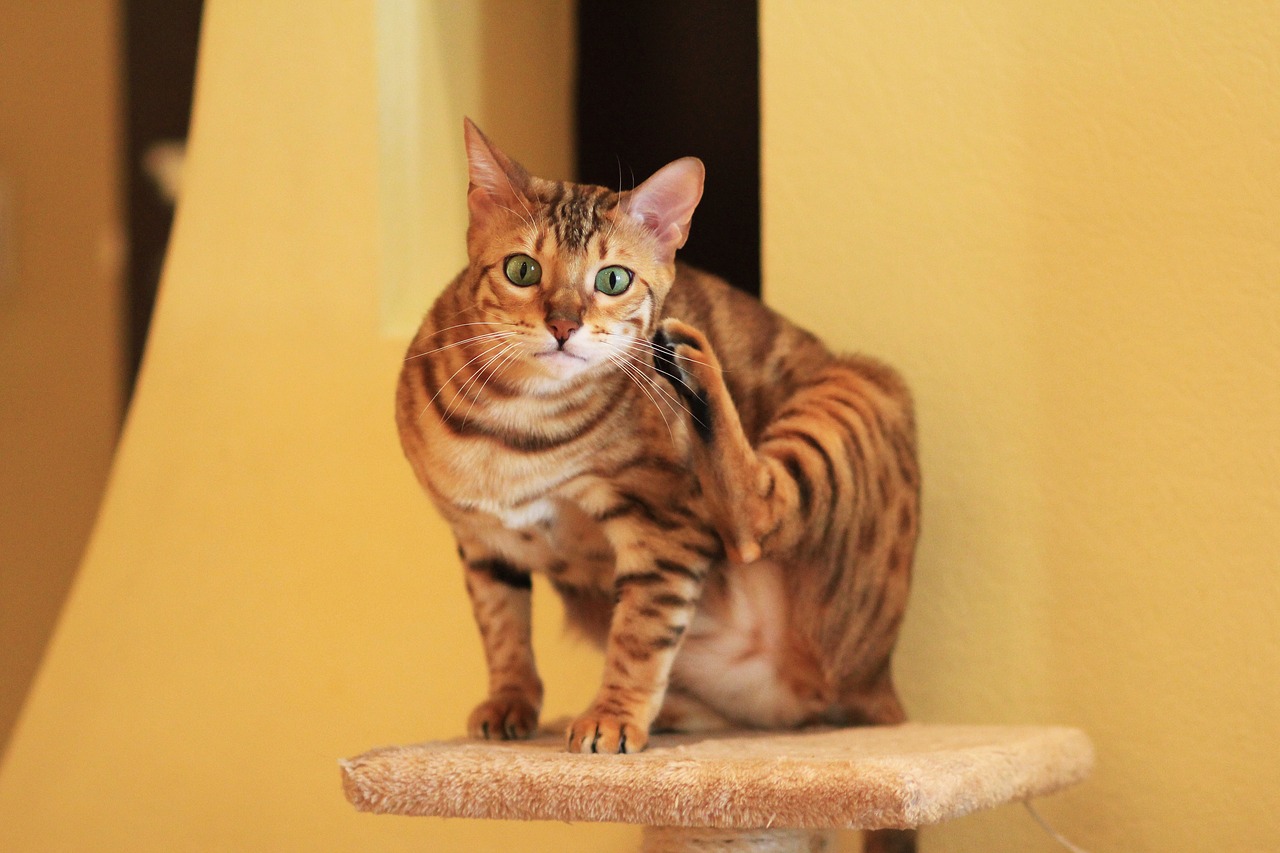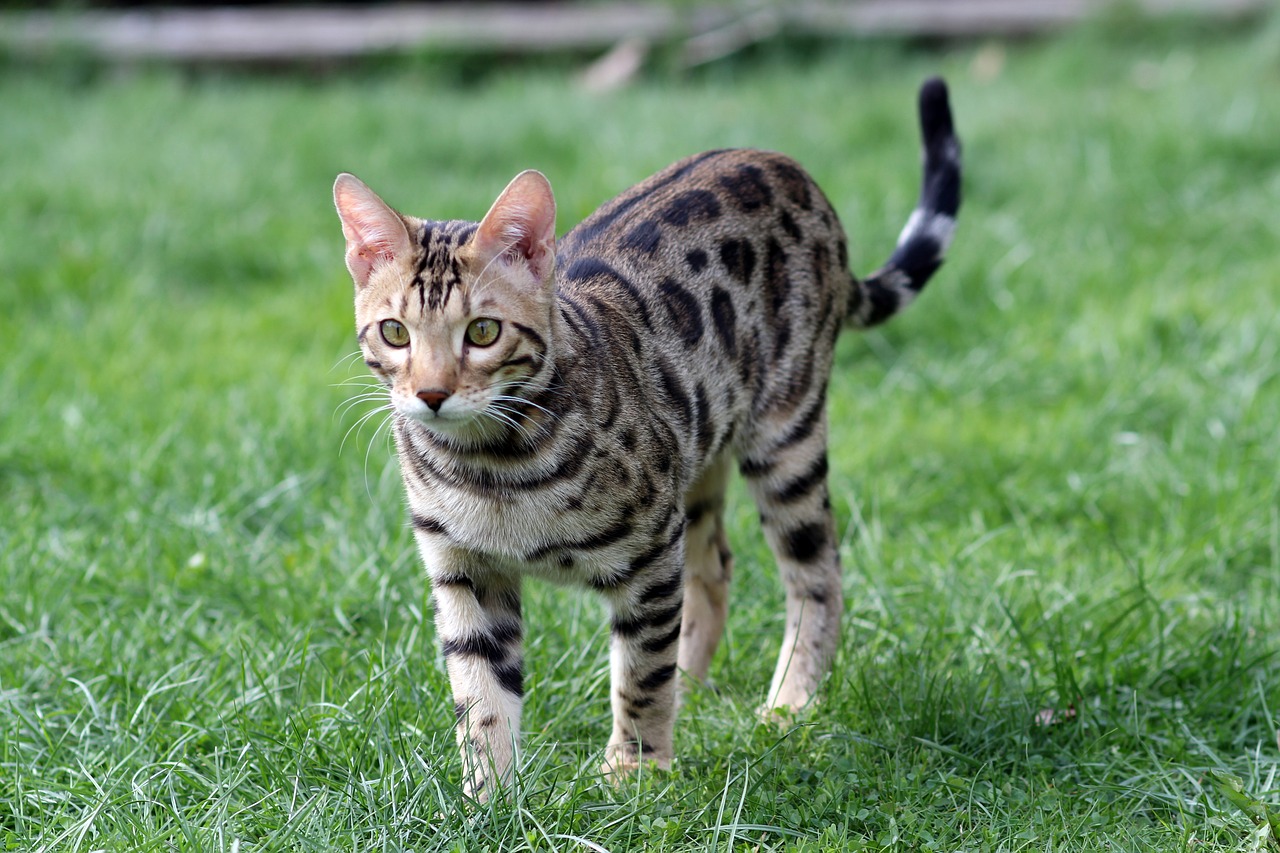The Best Cat Food for Bengals (Ideal Diet & Nutrition)
The Bengal cat may look like a wild creature that lurks the safaris of Africa, but this breed is actually an affectionate type of house cat. Do not be fooled by their likeness to the leopard. Bengal cats are domesticated pets that are highly active, intelligent, and curious much like their wild cousin; the jungle leopard.
These beautiful cats are a relatively difficult or expensive breed to acquire. To maintain their health and appearance, here are some of the best cat food for Bengals and important facts on their nutrition that you need to know as a responsible owner.
Snapshot: The Top 5 Bengal Cat Foods
FOOD | TYPE | OUR RECOMMENDATION |
|---|---|---|
Dry | ||
Dry | ||
Wet | ||
Wet | ||
Dry |
About the Bengal Cat
The Bengal cat is a short-haired, medium-sized spotted cat breed that is agile, lithe, and majestic as much as they are graceful. Just like their wild counterpart, Bengal cats are fast and energetic.
You’re probably wondering why a domesticated cat looks so much like a traditional leopard in the wild. Well, history states that back in the 50’s and 60’s, Asian leopard cats were crossed with shorthair breeds, producing the first hybrids. Due to their popularity, they have been bred over and over and with different mating pairs over the years. Domestic breeds that are bred to be sold as pets today are free from their ‘wild’ traits that they would otherwise get from their leopard ancestors.
Physical

Bengal cats have a long and athletic shape with good muscle tone. They have small wedge-shaped heads with oval-shaped eyes and medium-sized pointed ears that sit atop. A distinct facial detail of the Bengal cat is their rounded chin with thick whiskers, giving them a more exotic appearance. And just like leopards, they have long, thick tails that are rounded near the end.
In terms of size and weight, female Bengal cats can grow up to 8 to 12 pounds while males can grow up to 10 to 15 pounds. In general, they have a life expectancy of 12 to 16 years old.
Spotted & Marbled Bengals
There are two types of Bengal cats that are classified according to the pattern on their coat. There are spotted, and there are marbled Bengals. Spotted Bengals have ‘spot' markings called rosettes. These spots have a more randomized distribution on the coat and are larger in size, unlike other spotted breeds. Akin to the wild leopard's spots, Bengal cats have a light colored spot surrounded by a darker colored outline.
On the other hand, marbled Bengals have ‘swirly' spots that resemble marble, hence the name. Marbled Bengals' coats are characterized by highly uneven spots that are not symmetrical. Depending on their breeding history, Bengal cats can have different types of marbled coats such as brown spotted or black spotted.
Personality
Personality-wise, Bengal cats are affectionate and friendly, but they can be quite a handful due to their high energy. Usually, a Bengal cat will prefer to play with you or roam around the house rather than sitting on your lap and snoozing. Nevertheless, Bengal cats can become great companions or family pets.
Nutrition & Diet Requirements for Bengal Cats

Bengal cats belong to the high-energy category of breeds. Since they are innately active and athletic, their owners should be aware of the appropriate nutrition that they require. Ultimately, feeding a Bengal cat would depend on energy level, age, and specific requirements.
As kittens, Bengal cats should be fed with varying types of cat food. In this way, you can find out their likes and dislikes so you can select a better cat food in the future, as well as discover possible food allergies. On the other hand, senior Bengal cats may become picky with their food, so make sure you offer them a different type of cat food if they refuse to eat.
During their adulthood stage, they need an optimized balance of macronutrients, focusing mainly on protein. Carbohydrates should be limited as they can lead to unnecessary weight gain and health-related problems.
Carbohydrates
Bengal cats should not be fed with cat foods that are packed with fillers made from grain or corn. Their leopard ancestors wouldn't eat grains, so why would they? No matter how much breeding is done to Bengal cats, they still need a higher amount of protein as compared to carbohydrates. When picking out cat food, make sure to analyze the label for the excessive amount of carbohydrates or grain-rich fillers.
Protein
The proper nutrition of Bengal cats depends largely on protein-rich foods like poultry, meat, and fish. Their ancestor, the Asian leopard cat, had its own protein-rich diet that consisted of birds and other prey. The best way to feed your Bengal cat enough protein is to select a cat food that is rich in the macronutrient coming from natural sources.
Furthermore, a Bengal cat can also benefit from a raw diet consisting of fresh meats. Even though they are domestic, it can be observed that they have a preference for raw meat. You can either feed them entirely with a raw diet (but with the advice of a vet, of course) or supplement their protein needs by adding raw meat to their cat food.
Tip: Bengal cats are found to have a liking for chicken--either cooked or raw.
Fat
All cats including the Bengal cat need enough amounts of fat from which they can get their daily supply of essential fatty acids, which would help build a healthy immune system and maintain their beautiful coats.
Common Health Problems of Bengals

Bengal cats are more prone to certain diseases such as polycystic kidney disease (PKD) if the breeder is not responsible enough, feline infectious peritonitis, and chronic diarrhea caused by infection.
Other possible diseases include patellar luxation, hip dysplasia, hypertrophic cardiomyopathy, renal atrophy, flat chested kitten syndrome, and pyruvate kinase deficiency among others.
It's important that breeders have their studs tested for some of these diseases. If they turn out positive, they should be removed from the breeding pool. Before purchasing a Bengal cat, make sure that your breeder has proof of DNA testing for these diseases.
The 5 Best Cat Food for Bengals Reviewed
1. Royal Canin Feline Breed Nutrition Bengal Dry Cat Food
The Royal Canin is one of the best dry food for Bengal cats. This formulation, in particular, has been specially engineered for the Bengal breed, with a unique kibble shape for better oral hygiene and ingredients that support healthy coats and athletic conditions.
2. Nature’s Variety Instinct Original Grain Free Recipe Natural Dry Cat Food
Another great option for dry cat food on this list is from Nature's Variety brand. As we've mentioned before, Bengal cats love chicken. They will certainly lean towards this recipe made with cage-free chicken and other wholesome ingredients (grain-free, of course). Moreover, this cat food is raw coated for optimum nutrition and taste.
3. Wellness Complete Health Natural Grain Free Wet Canned Food Pate Recipe
Your poultry-loving kitten will love this wet cat food from the Wellness brand. This version is a chicken pate recipe with all natural ingredients-- no grain, carrageenan, or meat by-products that would not benefit your beloved pet. This cat food also comes in other flavors such as chicken and lobster, turkey and salmon, and chicken and herring among other tasty recipes.
4. Hill’s Science Diet Senior Wet Cat Food
Senior Bengal cats may have decreased activity level. Thus, they need a diet that is still rich in protein but would not cause them to gain unnecessary weight. The Hill's Science Diet Senior wet cat food is formulated for older cats who are seven years old and beyond. The formulation helps maintain a healthy digestive system and support vital organ health. Moreover, this recipe also comes in chicken.
5. Whole Earth Farms
Kittens who are in their window of growth and development need a cat food that is complete in both macro and micronutrients. The Whole Earth Farms brand offers a nutritionally-complete option for kittens; dry cat food made from all-natural ingredients with no added fillers or substitutes. Additionally, it is grain-free and comes in the chicken flavor that Bengal cats love.
In Summary
The Bengal cat is a unique breed in terms of its ancestry and physical appearance. Indeed, you are more likely to recognize a Bengal cat than other spotted breeds. Back in the height of their fame, they were once called the Rolls Royce of pet cats because of their desirability. Today, the Bengal breed is still highly sought for among cat lovers.
Maintaining a Bengal cat is relatively easy, but despite their low maintenance needs, Bengal cats need to have proper nutrition to support their high activity levels. The best cat food for Bengals would be a nutritionally complete food with lots of protein to support their energy needs and muscle maintenance. With proper food, Bengal cats can live longer and enjoy a healthy life.





